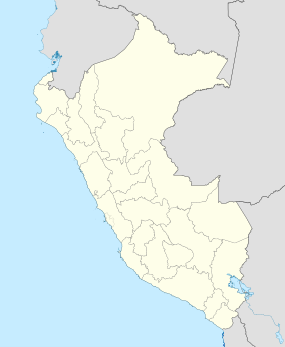Jiskairumoko

Excavations at the site of Jisk'a Iru Muqu in 2002
|
|
| Alternate name | Jiskairumoko |
|---|---|
| Location | Puno Region, Peru |
| Region | Ilave Valley, Lake Titicaca Basin |
| Coordinates | 16°12′40″S 69°45′50″W / 16.21111°S 69.76389°WCoordinates: 16°12′40″S 69°45′50″W / 16.21111°S 69.76389°W |
| Altitude | 3,890 m (12,762 ft) |
| Type | open-air village site |
| Area | 0.4 ha (0.99 acres) |
| History | |
| Founded | Approximately 3,400 BC |
| Abandoned | Approximately 1,600 BC |
| Periods | Late Archaic to Early Formative |
| Cultures | South-Central Highland |
Jisk'a Iru Muqu (Aymara, jisk'a small, iru a type of grass, (Festuca orthophylla), muqu knot; joint of a part of the reed, also spelled Jiskairumoko, Jisk'airumoko) is a pre-Columbian archaeological site 54 kilometers (34 mi) south-east of Puno, Peru. The site lies in the mountains at elevation 4,115 meters (13,500 feet), in the Aymara community of Jachacachi, adjacent to the Ilave River drainage, of the Lake Titicaca Basin, Peru. Occupation of Jisk'a Iru Muqu spans from the Late Archaic to the Formative.
The site was first formally recorded by Mark Aldenderfer in 1994, during a pedestrian survey of the Ilave River. The first excavations at the site were conducted in 1995. Jisk'a Iru Muqu is the first Archaic open-air site excavated in the Lake Titicaca Basin. Under the direction of Aldenderfer, a team from University of California, Santa Barbara, including Nathan Craig and Nicholas Tripcevich, conducted additional excavations at the site during the austral winters of 1999-2004. In-field geographic information system (GIS) methods were used in recording exposed surfaces. The site was plowed by tractor in 2005.
Jisk'a Iru Muqu plays a significant role in understanding the pre-Columbian history of Andean Peru due to: early prestige objects, architectural transitions, variation in structure internal organization, ritual preparation embedded in domestic use areas, and the formation of regular trade routes.
...
Wikipedia

